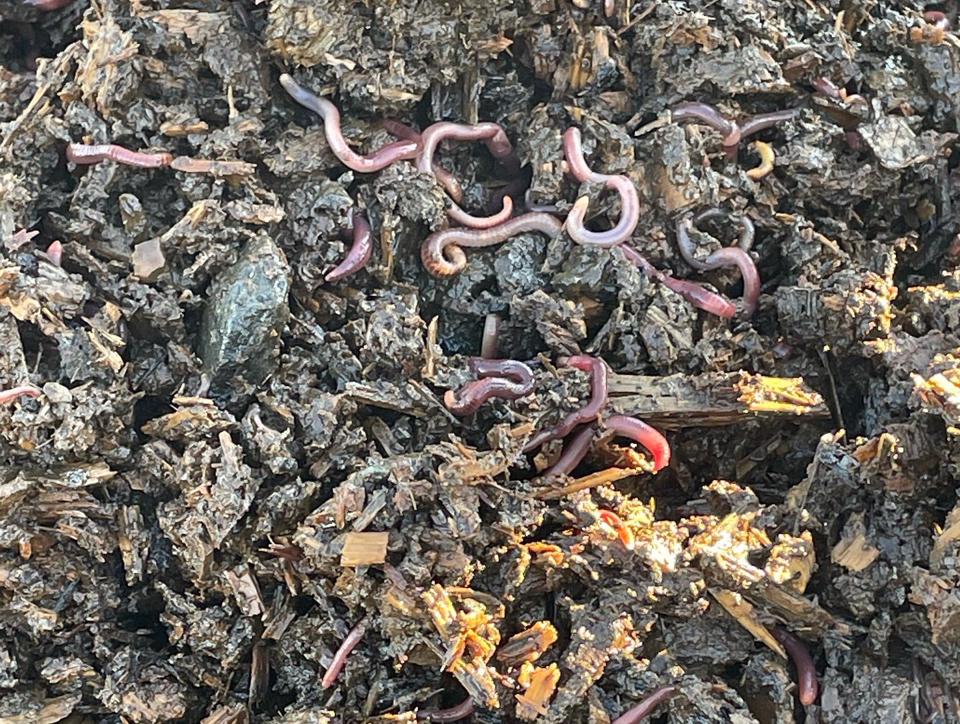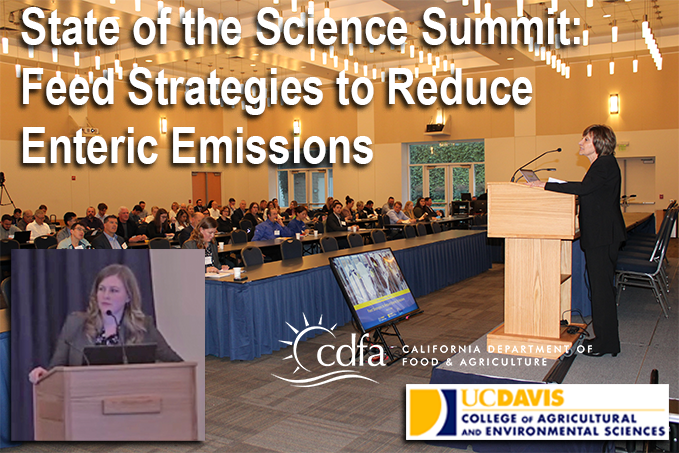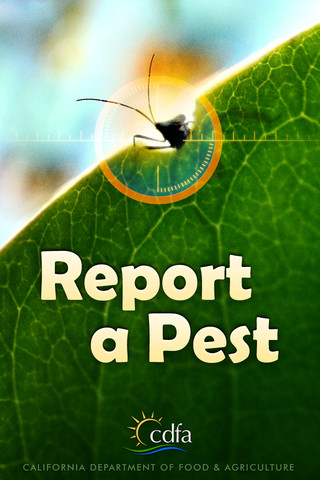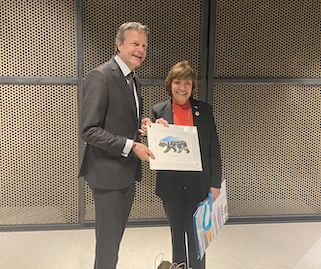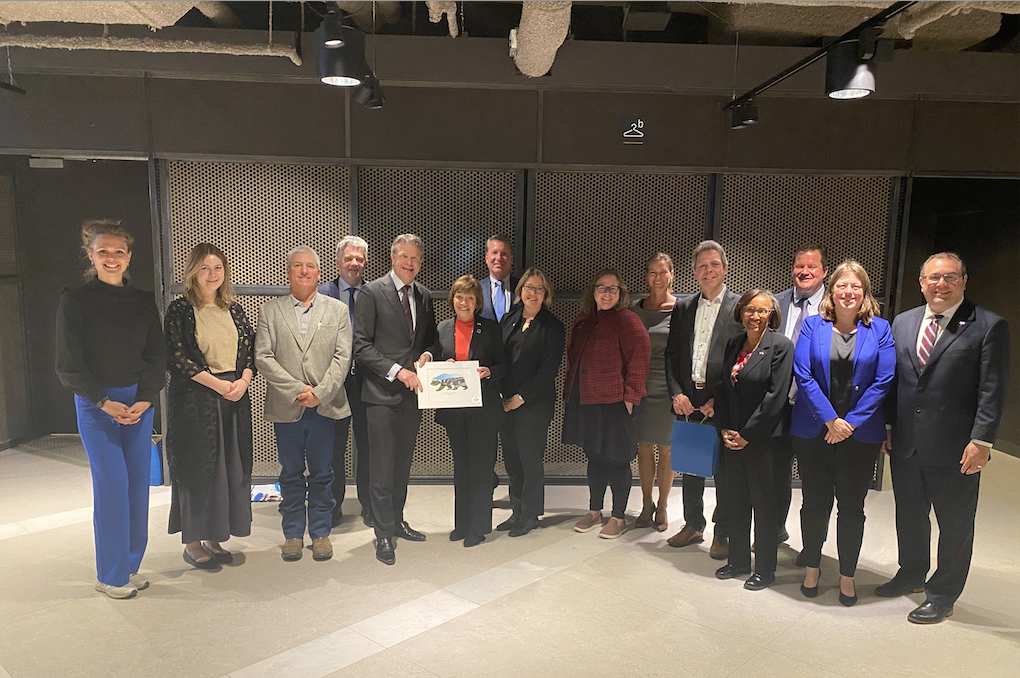The California dairy sector is on a mission to innovate how manure is recycled—boosting water quality outcomes and soil health. An initial roadmap has been drawn. Several projects are already under way. Millions of additional public and private investments will soon support the adoption of more advanced manure management practices on California dairy farms.
(Photo — worms in use to filter liquid effluent)
Dairy manure is a valuable resource. However, many dairies have more manure than they can use to grow their crops. This surplus creates both a challenge and an opportunity that the dairy sector is working to address. The California Department of Food and Agriculture (CDFA) convened a Manure Recycling and Innovative Products (MRIP) Task Force—a collaboration of farmers, academia, and public partners. The task force’s report suggests concrete steps to guide innovation and advancement.
“The [MRIP] Task Force has succeeded in developing recommendations for strategies to capture and enhance the value of dairy manure,” wrote Secretary Karen Ross in the forward of the report. “The value highlighted by these strategies includes building healthy soils and sequestering carbon, offsetting industrial fertilizer use, protecting water and air quality, and reducing agriculture’s carbon footprint in California. These benefits impact not just farmers, but the state, our consumers, and our environment.”
The report outlines a comprehensive game plan—to explore how conventional strategies and cutting-edge or emerging technologies can all be tapped into as solutions. MRIP will continue to meet this year and into the future to discuss progress and identify more ways to innovate. Today, California dairy farms apply liquid or solid manure nutrients to forage fields. One goal is to develop pathways for these nutrients to be transformed into valuable products, such as soil amendments that can be used to nourish other crops across California’s rich agricultural landscape.
As Forbes recently described it, one strategy that’s in motion is to “send in the worms.” Vermifiltration was first demonstrated on a dairy in Hilmar in 2014 and has since been demonstrated on another dairy in Washington state. Essentially, these farms use worm beds to filter liquid manure effluent. The worms absorb the water, and the bacteria in their guts convert the nitrogen into nitrogen gas (N2) which is a harmless gas that makes up about 78 percent of our atmosphere. Worm castings and decomposed wood chips from the beds offer potential value as fertilizer and soil amendments. CDFA’s Alternative Manure Management Program (AMMP) has provided funding support for another dairy vermifiltration project that’s under way, aiming to further demonstrate the potential of worms.
Another method being explored is the use of an algae raceway system. The system has been piloted on a California dairy, where it works in conjunction with a digester to both reduce methane, remove nitrogen, and purify remaining water. Like with vermifiltration, algae raceways show great promise for improving water quality outcomes.
Nitrogen capture systems represent a particularly innovative type of dairy manure management. Evaporative systems can provide environmental benefits and create pathogen-free solid and liquid fractions, which can be marketed as fertilizers. The system has been implemented on a few dairies in other states. An evaporative liquid manure processing project is in the works, coming to a California dairy soon.
With all of these new technologies, research is needed to ensure economic viability. This includes the cost to implement and maintain projects, and the marketing of post-treatment products, such as carbon credits, vermiculture compost, or raw materials for products, such as bioplastics. Through additional studies, the environmental outcomes can be independently confirmed, and economic models can be validated, allowing for widespread adoption on California dairies.
These efforts to advance manure management are about to get a big boost. The California Dairy Research Foundation (CDRF), and the CDFA, along with Dairy Cares and other industry partners, have been awarded up to $85 million by the U.S. Department of Agriculture (USDA) under the Partnerships for Climate-Smart Commodities program. The funding will leverage additional matching state funds and private capital investments, for a total of more than $300 million in new investments. Incentive funds provided through the “Dairy PLUS+ Program,” to be administered by CDFA, will help bring more full-scale projects to California dairies, reducing methane and improving groundwater protection. The practices will be measured and monitored by university researchers to quantify emission reductions and improved water quality outcomes. NOTE — The first solicitation for project applications is expected to be released soon.
“The Dairy Plus+ Program brings together organizations throughout the value chain to the benefit of our hard-working dairy farmers and the environment,” said Denise Mullinax, Executive Director of the California Dairy Research Foundation. “We look forward to working with the California Department of Food and Agriculture, the California Milk Advisory Board, Dairy Cares, the universities and others to implement this advanced climate-smart ag project in California’s dairy sector.”
Worms, algae, and evaporative technologies are just a few of the technologies and strategies being explored. The California dairy sector and its public and private partners will continue their important work to identify and verify ways to best serve the manure management needs of individual family dairy farms and bring environmental benefits to communities. Researchers and entrepreneurs are on board in this mission to discover dairy manure’s full potential as part of a more circular and sustainable California agriculture industry.



